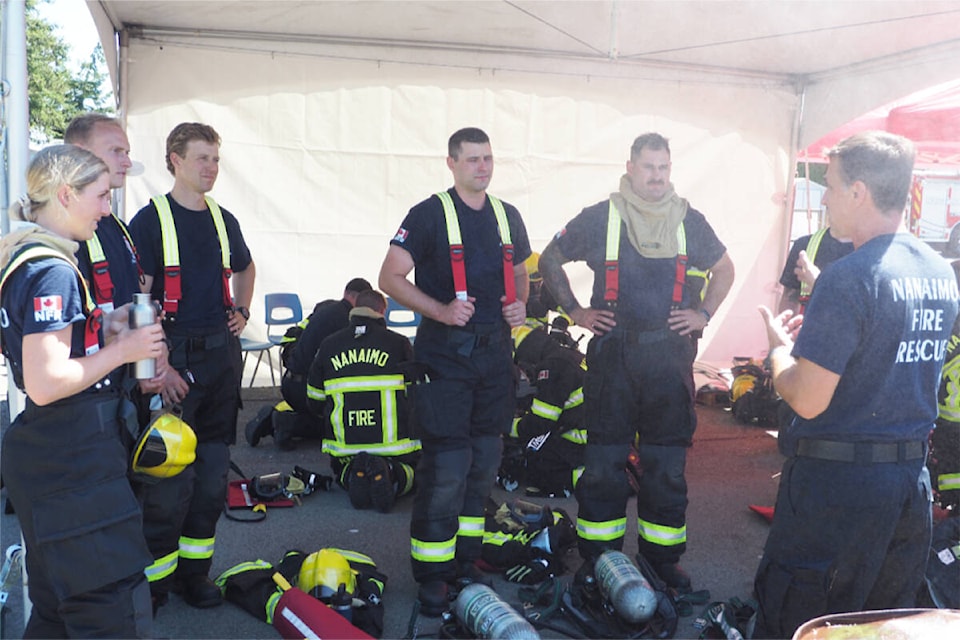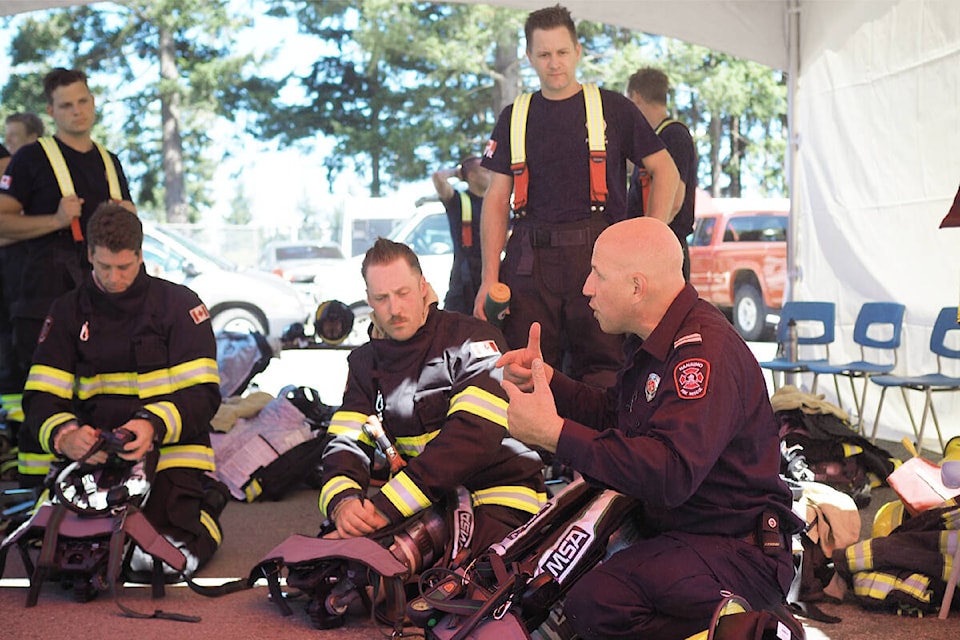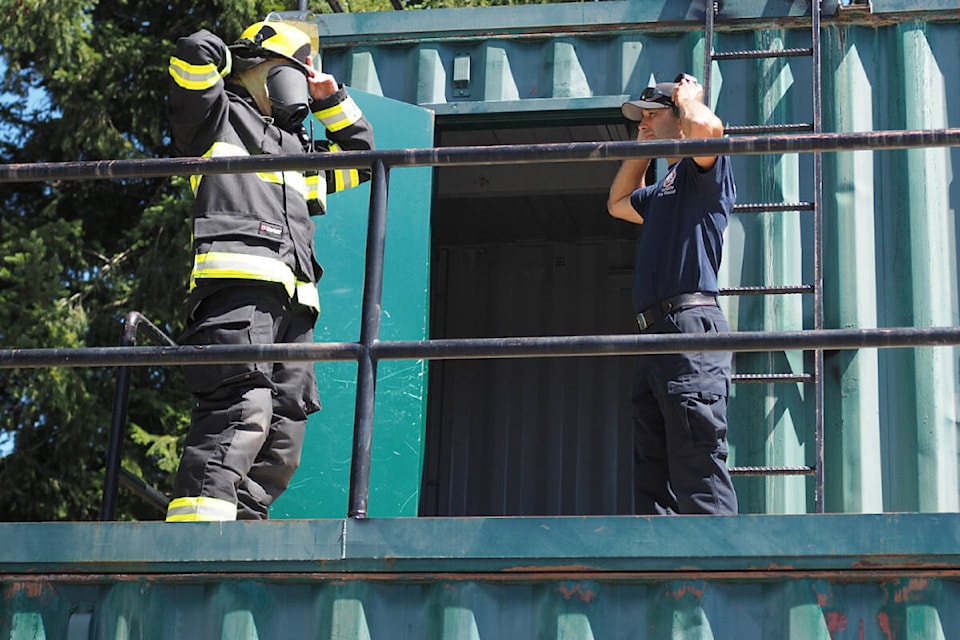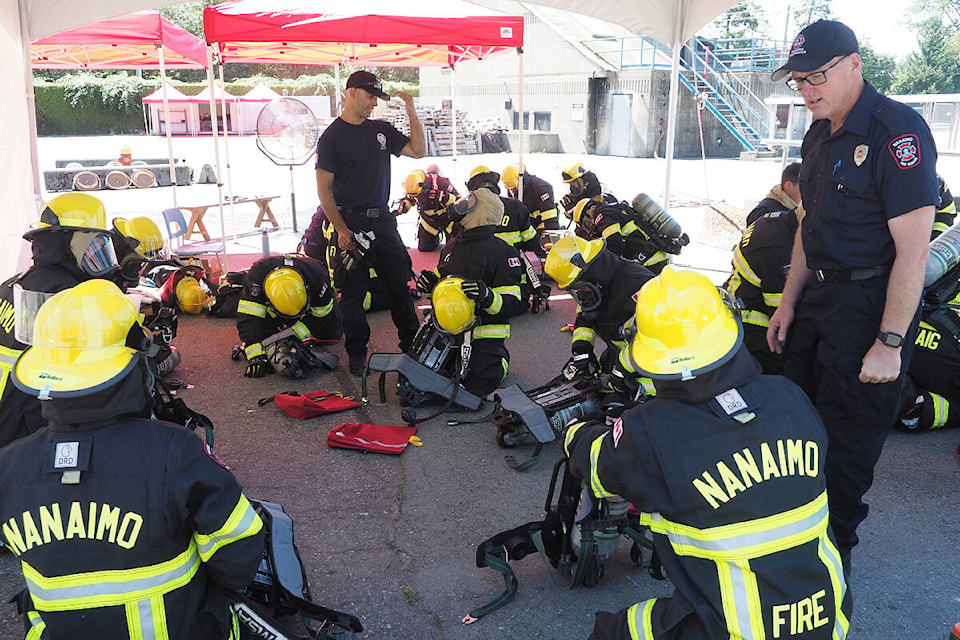Twenty-one new firefighters will soon share the load of responding to Nanaimo’s emergencies.
Nanaimo Fire Rescue announced the firefighters’ first day on the job was Wednesday, Aug. 2. They are the first of 40 firefighters budgeted to crew additional apparatus by 2025 as calls for service to emergency scenes continue to rack up annually, taxing personnel and equipment resources.
The recruits’ arrival is part of two phases of hiring and equipment purchases approved by Nanaimo city council last year.
Tim Doyle, Nanaimo Fire Rescue chief, said the two recruiting phases included ordering four new fire apparatuses. Three of the fire trucks will replace aging vehicles being taken out of front-line service and include an additional truck for Fire Station No. 1 downtown, the city’s busiest station.
One ladder truck and one pumper is also on order, plus a combination rescue-pumper truck procured to replace one of NFR’s heavy-duty rescue trucks. Doyle said the pumper-rescue combination provides better response flexibility than a single-purpose rescue truck.
“With the amount of use our apparatus are getting it’s important that our equipment can do all the functions … The rescue-pumper, it’s a little bit bigger, so is it a little bit more difficult to get around? Yes, bigger apparatus are, but it will do everything for us,” Doyle said.
Firefighter recruits joining the department bring more experience and education than before, Doyle said – many have degrees and experience in trades and other skills.
More hands on deck will help as response calls ramp up in double-digit percentages annually. Calls for service increased about 30 per cent last year to 10,000 calls and for 2023, crews are on track to respond to more than 12,000 calls, a 20 per cent increase.
Drug overdoses account for some of the increasing workload. Firefighters responded to about 700 overdoses in 2022. As of this week, crews had already attended more than 1,100 overdoses in 2023, a jump from an average of two per day last year, to five per day currently. All medical aids combined have jumped nine per cent and now account for 67 per cent of the total volume of responses, up from 58 per cent in 2022.
“Although medical aids make up a large percentage of our calls, we do so many other services in the community, from technical rescues to structure fires, wildland fires, motor vehicle accidents, to hazardous materials spills and incidents,” Doyle said. “Although we’re called firefighters, we’re really an all-hazards responder and we’re not just staffing up just for medical calls … It’s to support all of our work and support other emergency services.”
The workload carries a physical and mental toll on an understaffed fire service.
According to statistics from the B.C. Municipal Safety Association, psychological health and safety claims for firefighters and dispatchers combined make up approximately 65 per cent of all public health and safety claims at an average cost of more than $200,000 per claim.
“Getting the additional resources was a great sense of support from the community and council and senior leadership of the city and in the fire department,” Doyle said. “Even with this lift, based on our incidents, we run a very lean model, compared to our peer departments … There is a significant impact on mental health, but it’s about acknowledging that, supporting that, being open about it, advocating for resources and also getting down to just focusing on our core business.”
The fire department’s core business, emergency response, requires a keen focus on mental and physical health, public safety, in terms of education and prevention, and providing the highest quality training, support and equipment to prepare firefighters, as best as possible, to perform their jobs.
“It’s not just about getting firefighters,” Doyle said. “There’s a whole bunch of other measures taking place … There’s an emergency in the community, so that is the primary focus – we’ve got to get there, we’ve got to do the job right, we’ve got to save lives and make people safer – but there’s a lot of stuff in the background that goes into [support] … There’s nowhere in the fire department you can escape the emergencies and the trauma.”
The recruits are undergoing six weeks training at the Vancouver Island Emergency Response Academy training facility on Labieux Road until the end of September, when they will rotate into regular shifts at Nanaimo’s fire stations, giving Nanaimo Fire Rescue 105 operational firefighters.
READ ALSO: City of Nanaimo budgeting for 40 more firefighters and two new trucks
READ ALSO: Nanaimo’s new downtown fire station built for operational and energy efficiency
chris.bush@nanaimobulletin.com
Like us on Facebook and follow us on Twitter



